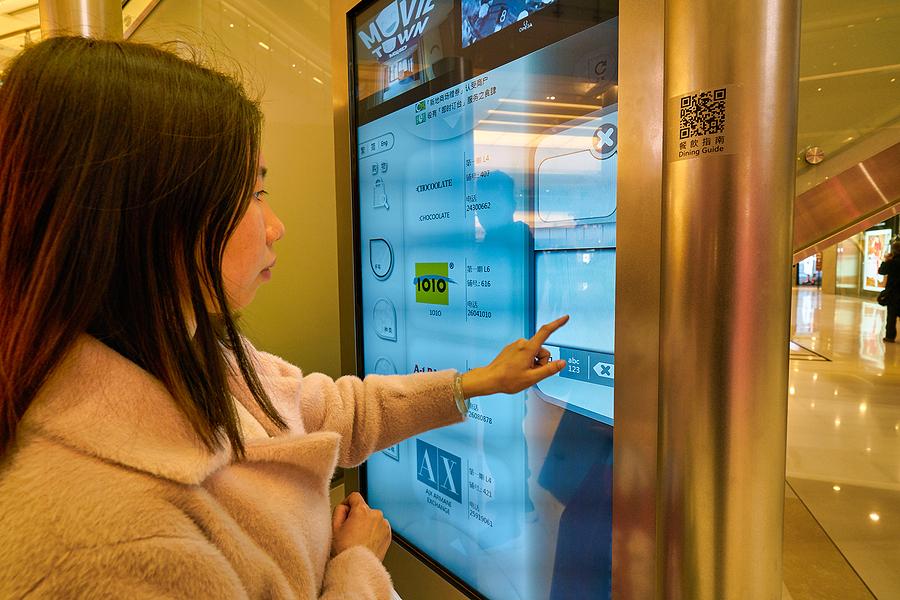One of the biggest trends in advertising using LED screens is the addition of interactive touchscreen displays, which allow people to not only see dynamic marketing content but also interact directly with it to create a range of unique experiences.
Whilst fully interactive advertising displays are a relatively recent invention and have only come into vogue after the popularity and ubiquity of the smartphone, touchscreens are far from a new invention.
In fact, the earliest touchscreen ever patented, a Philco Corporation electronic pointer, predates the Manchester Baby, the first electronic stored-program computer and the prototype for the first commercially available computer, the Ferranti Mark 1, by two years.
It consisted of an electronic stylus that would amplify and add to a broadcast signal to add circles or arrows onto a live broadcast, as an early example of the types of technology seen in modern sports presentations.
However, Philco’s device and many of the telewriting tools that came after it worked by amplifying light signals and therefore relied on the light produced by the screen itself.
This changed in 1962 thanks to the work of Leon D Harmon, then an engineer for AT&T. The electrographic transmitter worked using a matrix of lights that shined across the touch screen and would register a signal that corresponded to where the crossing beams were broken.
This system would see graphics design applications for many years, with its primary benefit being its easy scalability. You could simply add more emitters and detectors to improve accuracy and resolution.
However, the first modern touch screen that used capacitive technology (the type used on modern touchscreens and smartphones) was developed by Eric Johnson of the Royal Radar Establishment in 1965.
The technology worked as it does today, using glass coated with a transparent conducting layer that when touched with a finger causes a change in electric current, which a computer can read to determine position.
It was used for years by British air traffic control and this early system was used as late as the 1990s.
The first computer that had a touch screen built-in (albeit one that used the more primitive resistive touchscreen technology invented in the 1970s) was the HP-150 in 1983, but whilst not entirely unsuccessful, its successor made it a rarely adopted optional extra.

